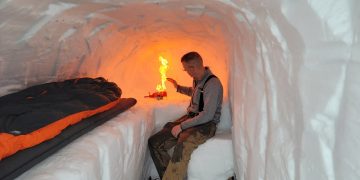In the world of survival and fieldcraft, trapping small game plays a vital role in providing sustenance, ensuring the safety of the outdoorsman, and maintaining a connection to ancient skills that have sustained humanity for centuries. Whether you’re a seasoned woodsman, an adventurer, or a beginner honing your survival skills, knowing how to trap small game can make all the difference between success and failure in the wild.
This guide explores various methods for trapping small game in the field. We’ll cover both traditional and modern techniques, offering practical tips and tricks for setting traps effectively. By the end, you’ll have a comprehensive understanding of trapping techniques, and a few creative tricks up your sleeve for securing your next meal in the wilderness.
Why Trapping Small Game?
Before we dive into specific techniques, it’s important to understand why trapping is such an essential skill in fieldcraft. Small game like rabbits, squirrels, birds, and rodents are abundant in most environments. These animals are relatively easy to catch compared to larger game, and with the right tools and techniques, you can reliably catch them with minimal effort.
Trapping is often a more efficient and sustainable method of obtaining food than hunting, especially in situations where time is limited or the terrain makes it difficult to track or hunt larger animals. Moreover, it requires less energy and allows you to continue with other essential survival tasks while your traps do the work.
Key Factors in Successful Trapping
Trapping is an art, and it requires knowledge of both the natural world and the specific behaviors of animals you aim to catch. Here are the primary factors that determine your success:
- Location: Finding the right spot to set traps is crucial. Look for animal trails, feeding areas, and habitats such as burrows, nests, and dense undergrowth. Locations near water sources are often ideal since many small animals need water for survival.
- Bait: Different animals are attracted to different foods. Understanding what bait works best for your target species will increase the chances of a successful catch. For example, rabbits prefer leafy greens, while squirrels are attracted to nuts and seeds.
- Camouflage: Whether using snares, deadfalls, or cage traps, ensuring that your traps blend into their environment is essential. Animals are cautious and will avoid unusual objects in their path, so make sure your traps are inconspicuous.
- Timing: Setting traps at the right time of day and in the right season increases the likelihood of a catch. Early morning and dusk are often the best times for setting traps, as this is when small game is most active.

Types of Traps for Small Game
There are countless methods for trapping small game, ranging from simple snares to complex mechanical traps. Below are some of the most effective and popular trapping methods used in the field.
1. Snares
Snares are one of the most efficient and versatile traps for catching small game. A snare consists of a loop of wire or cord that tightens when an animal passes through it. Snares are often used for catching rabbits, squirrels, and other small animals that pass through narrow corridors.
- How to set a snare: Choose a well-used animal trail or a narrow passage where the animal is likely to pass. Cut a piece of wire or strong cord about 12–18 inches in length. Form the wire into a loop, and attach one end to a sturdy anchor, such as a tree branch or rock. Ensure the loop is at the right height for the animal you’re targeting, and leave enough slack to allow the loop to tighten when the animal’s head or neck passes through.
- Materials: You can use thin wire, fishing line, or even cordage made from natural fibers. Make sure the material is strong enough to hold the animal, but also flexible enough to tighten around its neck or body.
- Best target animals: Rabbits, squirrels, and even birds.
2. Deadfall Traps
A deadfall trap is one of the oldest and simplest forms of trapping. It consists of a heavy object (such as a rock, log, or a large piece of wood) that is triggered by a mechanism, falling onto the animal below when it touches a baited trigger.
- How to set a deadfall trap: Create a trigger mechanism using a stick or a piece of cord. The idea is to set up a heavy object in a precarious position above the bait. When the animal takes the bait, the trigger will release, and the heavy object will fall, crushing the animal.
- Materials: Large stones, logs, or anything heavy enough to crush small game.
- Best target animals: Mice, squirrels, rabbits, and other small mammals.
3. Cage Traps
Cage traps are often used for more persistent or cautious animals that may avoid simple snares or deadfalls. These traps consist of a cage that closes once the animal enters. Cage traps are generally humane, allowing the animal to be caught alive, making them ideal for catching animals like rabbits, squirrels, or even birds without causing harm.
- How to set a cage trap: Place the trap along an animal trail or near a feeding area. The trap door is triggered when the animal enters the cage, usually by stepping on a pressure plate or touching a trigger. Once the animal enters, the door shuts behind it.
- Materials: Metal mesh, wood, or wire can be used to build a sturdy cage.
- Best target animals: Rabbits, squirrels, and birds.
4. Pitfall Traps
Pitfall traps are simply holes dug in the ground, which animals fall into when they wander across the area. These traps are ideal for smaller animals that are not particularly agile or cautious, such as rodents or amphibians.

- How to set a pitfall trap: Dig a hole in the ground that is at least 12–24 inches deep and wide enough to accommodate the animal you are targeting. Camouflage the hole with sticks, leaves, and dirt to make it appear natural. You can also use a baited area to draw animals into the pit.
- Materials: A shovel or digging tool, and natural materials for camouflaging the hole.
- Best target animals: Mice, voles, amphibians, and small reptiles.
5. Foothold Traps
Foothold traps, also known as leg-hold traps, are designed to catch an animal by its foot. These traps are often used for larger game, but smaller versions can be effective for catching animals like rabbits and raccoons.
- How to set a foothold trap: Dig a small hole or depression in the ground where the animal is likely to step. Place the trap in the hole with the trigger mechanism set. When the animal steps into the trap, the jaws will snap shut around its foot.
- Materials: Steel or spring-loaded metal traps are commonly used, but smaller, homemade versions can be crafted from wire.
- Best target animals: Raccoons, rabbits, and larger rodents.
6. Spring Pole Traps
Spring pole traps use the natural tension of a pole or branch to catch an animal. The spring mechanism is triggered when the animal triggers a baited trigger, pulling it up or away from the ground.
- How to set a spring pole trap: Find a flexible sapling or young tree and bend it downward. Attach a snare or noose to the top, and place a bait or trigger under the snare. When the animal takes the bait, the tension on the spring will pull the animal up into the air or toward the ground.
- Materials: Flexible saplings, cordage, wire, or twine.
- Best target animals: Rabbits, squirrels, and small predators like foxes or coyotes.
Best Practices for Trapping Success
- Check traps regularly: Make sure to check your traps at least once every 12 hours, if not more often. Traps that go unchecked for long periods may allow the animal to escape or cause unnecessary suffering.
- Use humane methods: If possible, use traps that allow for the humane capture and release of the animal. Cage traps, for example, can be a good choice for those seeking to trap without harm.
- Maintain hygiene: When handling your traps, especially snares and deadfalls, ensure they are kept clean to avoid leaving human scent, which may cause animals to avoid the trap.
- Learn local laws: Make sure to check local regulations regarding trapping before setting traps in your area. In many places, certain traps may be illegal or require permits, and there may be restrictions on trapping certain species.
Conclusion
Trapping is a cornerstone of survival and fieldcraft, offering a reliable and efficient means of capturing small game for food. By mastering the various techniques described above, you can increase your chances of success in the wild. Remember, the most important aspects of trapping are patience, skill, and understanding the natural behavior of the animals you’re trying to catch.
Whether you’re in a survival situation, embarking on an adventure, or simply honing your wilderness skills, the ability to trap small game effectively will serve as an invaluable tool in your fieldcraft repertoire.























